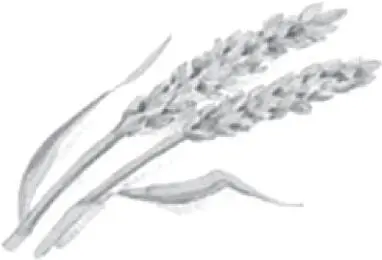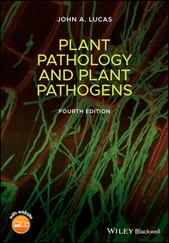20 S1  S1Plant cellular organization and genetic structure: an overviewS1.1 The unit of organization of living things S1.2 Levels of eukaryotic organization S1.3 The plant cell and tissue S1.4 Plant genome S1.5 Chromosomes and nuclear division S1.6 Genetic linkage and its implications S1.7 Chromosome mapping S1.8 Penetrance and expressivity S1.9 Nucleic acids: structure and function S1.10 Central dogma of molecular biology S1.11 Expression of genetic information S1.12 Protein structure S1.13 Regulation of gene expression S1.14 Synteny and plant breeding b b
S1Plant cellular organization and genetic structure: an overviewS1.1 The unit of organization of living things S1.2 Levels of eukaryotic organization S1.3 The plant cell and tissue S1.4 Plant genome S1.5 Chromosomes and nuclear division S1.6 Genetic linkage and its implications S1.7 Chromosome mapping S1.8 Penetrance and expressivity S1.9 Nucleic acids: structure and function S1.10 Central dogma of molecular biology S1.11 Expression of genetic information S1.12 Protein structure S1.13 Regulation of gene expression S1.14 Synteny and plant breeding b b
21 S2  S2Common statistical methods in plantbreedingS2.1 Role of statistics in plant breeding S2.2 Population versus sample S2.3 The issue of causality S2.4 Statistical hypothesis S2.5 Concept of statistical error S2.6 Principles of experimental design S2.7 Probability S2.8 Measures of central tendency S2.9 Measures of dispersion S2.10 Standard deviation S2.11 The normal distribution S2.12 Coefficient of variation S2.13 Standard error of the mean S2.14 Simple linear correlation S2.15 Simple linear regression S2.16 Chi‐square test S2.17 t‐test S2.18 Analysis of variance S2.19 Multivariate statistics in plant breeding S2.20 Path analysis Key references and suggested reading Outcomes assessment
S2Common statistical methods in plantbreedingS2.1 Role of statistics in plant breeding S2.2 Population versus sample S2.3 The issue of causality S2.4 Statistical hypothesis S2.5 Concept of statistical error S2.6 Principles of experimental design S2.7 Probability S2.8 Measures of central tendency S2.9 Measures of dispersion S2.10 Standard deviation S2.11 The normal distribution S2.12 Coefficient of variation S2.13 Standard error of the mean S2.14 Simple linear correlation S2.15 Simple linear regression S2.16 Chi‐square test S2.17 t‐test S2.18 Analysis of variance S2.19 Multivariate statistics in plant breeding S2.20 Path analysis Key references and suggested reading Outcomes assessment
22 Glossary of terms
23 Index
24 End User License Agreement
1 Chapter 1 Table 1.1 Twenty‐five major food crops of the world. Table 1.2 An operational classification of technologies of plant breeding. Table 1.3 Selected seed companies in various parts of the world. Table 1.4 Selected milestones in plant breeding.
2 Chapter 4 Table 4.1 Transgressive segregation. Table 4.2 Heritability (broad sense) estimates of some plant architectural tr... Table 4.3 Calculating general and specific combining abilities.
3 Chapter 5 Table 5.1 Pollination mechanisms in plants. Table 5.2 Examples of predominantly self‐pollinated species. Table B5.1 Old and new names of tomato and its wild relatives. Table 5.3 Examples of predominantly cross‐pollinated species.
4 Chapter 6 Table 6.1 The variability in an F 2population as affected by the number of ge... Table 6.2 A summary of the reproductive isolation barriers in plants as first...
5 Chapter 7 Table 7.1 List of crops where desirable and heritable somaclonal variations h...
6 Chapter 8 Table 8.1 The five kingdoms of organisms as described by Whitaker.Table 8.2 Divisions in the Kingdom Plantae.Table 8.3 Important field crop families in the Division Magnoliophyta (Flower...
7 Chapter 9Table 9.1 Important centers of diversity.Table 9.2 Characteristics of domestication syndrome traits.
8 Chapter 10Table B10.1 Conservation methods for different categories of diversity rated ...Table B10.2 Varieties registered from 1973 to 1990 proved to have been develo...Table 10.1 Germplasm holdings in germplasm banks in the US.Table 10.2 Germplasm holdings at the International Agricultural Research Cent...
9 Chapter 11Table B11.1 Characters listed in the current UK recommended lists of barley.
10 Chapter 12Table 12.1 Essential amino acids that are low in selected major world food cr...Table B12.1 List of key traits of importance incorporated into biofortified m...Table B12.2 Description of sites used for the advanced yield and on‐farm tria...Table 12.2 Essential amino acids in animal/human nutrition.
11 Chapter 15Table 15.1 Relative salt tolerance in plants.Table 15.2 Examples of warm‐ and cool‐season crops.Table 15.3 Summary of selected plant essential mineral nutrients and their ro...Table 15.4 Common deficiency symptoms of selected plant essential nutrient el...
12 Chapter 16Table 16.1 The concept of congruency backcross.
13 Chapter 19Table B19.1 Yam selection traits and improvement goal.
14 Chapter 20Table B20.1 Garcinia accession studied.Table 20.1 A comparison of different molecular markers.
15 Chapter 22Table 22.1 Comparing NGS with Sanger sequencing method.
16 Chapter 24Table B24.1 Some remarks on the properties and limitations of two experimenta...
17 Chapter 25Table 25.1 Examples of commonly used physical mutagens.Table 25.2 Examples of commonly used chemical mutagens.Table 25.3 Selected general areas of achievement in mutation breeding.
18 Chapter 26Table 26.1 Polyploid series of selected species.Table 26.2 Classification of polyploidy.Table 26.3 Naming of polyploids.Table 26.4 Genetics of autoploids.Table 26.5 Genetic frequencies following chromosome segregation of autotetrap...Table 26.6 Multiple allelelism in autotetraploids.Table 26.7 Aneuploid nomenclature.Table B26.1 Estimated gain per cycle for grain yield, ear, and plant traits o...
19 Chapter 28Table 28.1 Comparing NGS (next‐generation sequencing) with Sanger sequencing ...
20 Chapter 30Table 30.1 Key databases for bioinformatics.Table 30.2 Types of BLAST queries.Table B30.1 BLAST outputs of total score, query coverage, e‐value, percentage...
21 Chapter 31Table 31.1 Demonstration of G × E interaction.Table 31.2 Stability analysis.
22 Chapter 32Table 32.1 Information on a seed tag.
23 Chapter 33Table 33.1 US agencies and biotechnology regulatory oversight.Table 33.2 Some viral coat proteins that have EPA exemption.
24 Chapter 35Table 35.1 The 16 Centers supported by the CGIAR.Table 35.2 The focus crops for CGIAR research.
25 Chapter 39Table B39.1 Genotypes and corresponding phenotypes for A‐, B‐ and R‐lines in ...
26 Chapter 42Table B42.1 James Hutton Institute (formerly SCRI) strategy for breeding fini...
27 Chapter 43Table B43.1 Cotton breeding program.Table B43.2 Comparison between new release DP 491 and DP 5415.Table B43.3 Comparison between new release DP 488 BG/RR and DP 458 B/RR.Table B43.4 Comparison between new release DP 432 RR and ST 4793 RR.
28 1Table S1.1 A summary of the structures of plant cells and their functions.Table S1.2 Number of chromosomes per cell possessed by a variety of plant spe...
29 2Table S2.1 Data for distribution of plant seedling height.Table S2.2 Grouped data for frequency calculation.Table S2.3 Data for oil and protein content of soybean seed.Table S2.4 Data on plant yield and maturity of soybean.Table BS2.1 Summary analysis of MANCOVA analysis of oil% in Brassica napus ger...
1 Chapter 1 Figure 1.1 The yield of major world food crops is steadily rising. A signifi... Figure B1.1 The focal crops of PhD Plant Breeding students of the WACCI Prog... Figure B1.2 Home countries of current WACCI students showing student numbers... Figure B1.3 The focal crops of PhD graduates of the WACCI Programme (2013–20... Figure B1.4 PhD Plant Breeding graduates trained per country at WACCI (2013–... Figure B1.5 Picture of WACCI Cohort 1 Graduation Ceremony: Fresh Graduates i...
2 Chapter 3 Figure 3.1 The relationship between gene frequencies and allele frequencies ... Figure 3.2 The approach to linkage equilibrium under random mating of two lo... Figure 3.3 Pedigree diagrams can be drawn in the standard form (a or b) or c... Figure 3.4 The inbreeding coefficient may be calculated by counting the numb... Figure 3.5 Increase in percentage of homozygosity under various systems of i...
3 Chapter 4 Figure 4.1 Environmental effect on gene expression. The phenotype = genotype... Figure 4.2 (a)Nilsson‐Ehle's classical work involving wheat color provided t... Figure 4.3 The effect of phenotypic variance on genetic advance. If the phen... Figure 4.4 Genetic gain or genetic advance from selection indicates the prog... Figure 4.5 The North Carolina Design I. (a) This design is a nested arrangem... Figure 4.6 North Carolina Design II. (a) This is a factorial design. (b) Pai... Figure 4.7 North Carolina Design III. The conventional form (a), the practic... Figure 4.8 Systems genetics of complex traits: An integrative framework show...
Читать дальше

 S1Plant cellular organization and genetic structure: an overviewS1.1 The unit of organization of living things S1.2 Levels of eukaryotic organization S1.3 The plant cell and tissue S1.4 Plant genome S1.5 Chromosomes and nuclear division S1.6 Genetic linkage and its implications S1.7 Chromosome mapping S1.8 Penetrance and expressivity S1.9 Nucleic acids: structure and function S1.10 Central dogma of molecular biology S1.11 Expression of genetic information S1.12 Protein structure S1.13 Regulation of gene expression S1.14 Synteny and plant breeding b b
S1Plant cellular organization and genetic structure: an overviewS1.1 The unit of organization of living things S1.2 Levels of eukaryotic organization S1.3 The plant cell and tissue S1.4 Plant genome S1.5 Chromosomes and nuclear division S1.6 Genetic linkage and its implications S1.7 Chromosome mapping S1.8 Penetrance and expressivity S1.9 Nucleic acids: structure and function S1.10 Central dogma of molecular biology S1.11 Expression of genetic information S1.12 Protein structure S1.13 Regulation of gene expression S1.14 Synteny and plant breeding b b










